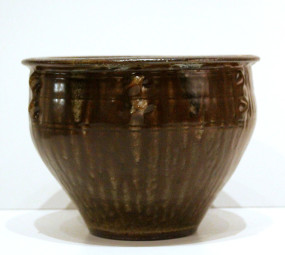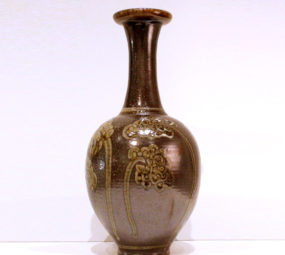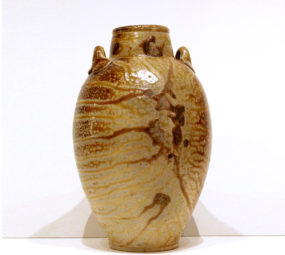Daniel Johnston
Artist Bio
In Seagrove, NC, Daniel Johnston grew up in a farming family but found influence in the local pottery community.
He has apprenticed in the Leach, Cardew, and Hewitt school of making pots. For nearly fifteen years he has devoted his time to understanding the many traditions of his craft. He states, “I do not try to control my materials, rather I try to understand them.” Johnston has practiced utilizing local materials and firing large wood-burning kilns in locations such as England and Thailand. During his time in Northeast Thailand in the village of Phon Bok, he worked with Thai potters producing big utilitarian jars with the intention of introducing a South-East Asian influence into traditional NC pottery. In the ten years since, Johnston established his personal pottery studio and kiln in Seagrove, NC where he continues to reside.
Daniel Johnston is featured in museum collections such as The Mint Museum of Art, Charlotte, NC, The Gregg Museum of Art & Design, Raleigh, NC, and the North Carolina Pottery Center in Seagrove, NC. He also has lectured and taught several workshops across the Southeast including at the Smithsonian’s Folk Life Festival in Washington, DC, Penland School of Crafts in Penland, NC and St. Ives Ceramics in St Ives, Cornwall, England.
Local Clay
Daniel uses local clay to make all of his pots. The refining process is labor intensive but the simplicity of mining clay and transforming it into useful and beautiful objects is greatly rewarding and fulfilling on many levels. The local clay culturally offers a connection to the many potters that dug clay in the Seagrove area. The variation and inconsistency of minimally refined clay gives a richness and beauty to the pots.
Glaze
The glaze Daniel uses is a combination of wood ash from a wood stove, a local red earthenware clay, and a local stoneware clay. The idea of using wood ash and clay to create a glaze is several thousand years old. Different proportions of these two remarkable materials can give you a wide range of amazing results. These two seemingly simple materials have produced glazes throughout time that are unparalleled in diversity and beauty.
Numbered Pots
In 2008 Daniel started numbering the large pots, starting at # 201. The first 200 large pots that were made are not numbered. This dates the pots and allows him to keep better track of the progression of his work over his career.
Side Fired Pots
The pots that have drips running horizontal rather than vertically have been fired on their sides directly in the fire box. Daniel places the pots on their side resting on sea shells in the fire box where they will be covered with ash and embers during the three day firing. Over the three days the ash will melt and form runs wrapping around the pot horizontally. The sea shells that the pots rest on prevent the pots from sticking to each other and the floor of the kiln. After the pots are unloaded the shells fall away and an imprint of the shell is revealed on the side of the pot. This type of firing offers a rich and complex surface that leaves you much too visually explore.
Grave Markers:
Years ago grave markers where made by folk potters, marking the graves of family and friends. The grave markers where a shift from purely functional pots to a more sculptural pot. While these grave markers served the purpose of marking graves, the folk potters took great liberties with the forms and decoration displaying a much more creative side to their work.




